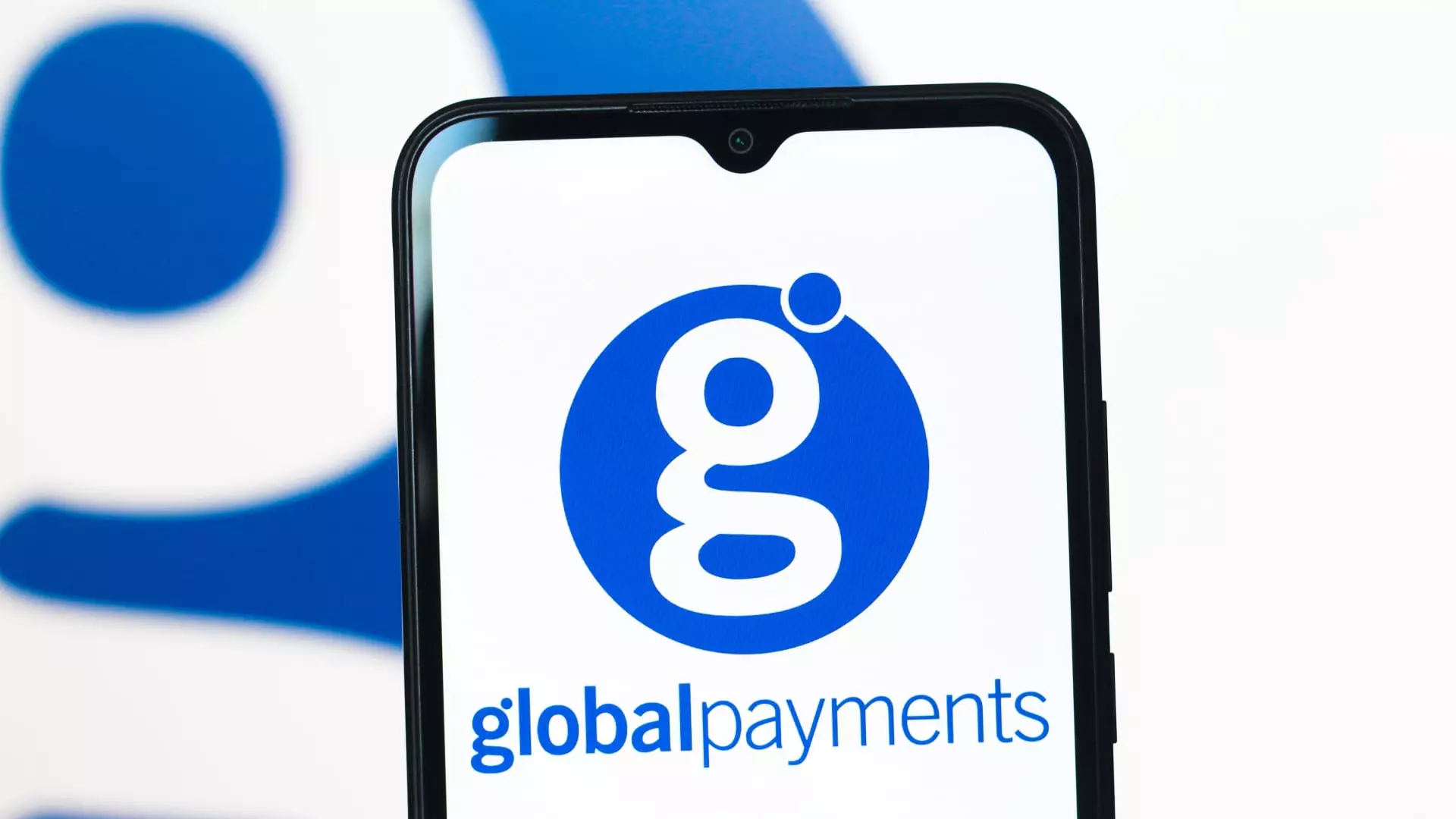Global Payments, once heralded as a pioneer in the payments technology landscape, now teeters on the edge of systemic failure. Its recent history reveals a company that has lost its grip on strategic clarity, choosing instead to chase high-profile acquisitions that ultimately stretch its operational capacity and dilute shareholder value. The attempted purchase of Worldpay epitomizes this misguided ambition. This move, cloaked in promises of synergies and industry dominance, appears more like a desperation play than a calculated strategic expansion.
This company’s leadership seems increasingly disconnected from ground realities. Instead of focusing on organic growth and strengthening existing core operations, Global Payments is blundering into deals that are mispriced and poorly integrated. The high multiple paid for Worldpay — over 10 times EBITDA versus its own trading multiple — indicates a misunderstanding of valuation, risking substantial overpayment. The resulting merger, rather than propelling the company into a new echelon, risks burdening it with debt and integration nightmares. If management continues to pursue acquisitions based on showy narratives rather than sound strategic fit, the company’s core business may become collateral damage in a larger game of financial engineering gone awry.
The glaring issue is management’s inability to deliver on promised synergies. Announced cost savings and revenue enhancements are viewed skeptically by the market, partly because past integration efforts—such as the TSYS acquisition—have fallen painfully short. This pattern of overpromising and underdelivering underpins investor suspicion, threatening to turn a temporary setback into a prolonged credibility crisis. If the leadership clings to this overreach, the company’s financial health and reputation could suffer irreversible damage, compromising long-term stability for short-term narrative shifts.
Boardroom Failings That Endanger Corporate Governance
One of the most alarming facets of Global Payments’ predicament lies in its governance framework. A weak, uninspired board has failed to hold management accountable amid a turbulent acquisition cycle. The board’s inability—or perhaps unwillingness—to scrutinize and challenge top executives reflects a broader disconnect between shareholder interests and corporate oversight.
Elliott’s proposition for board intervention reveals this deficiency vividly. A management team that overpays for acquisitions, dismisses the need for rigorous due diligence, and pushes forward despite market opposition indicates systemic governance failures. Replacing or augmenting the board with members who possess real expertise in integration and M&A is not an optional exercise; it’s an imperative for the company’s survival. A reconstituted board focused on accountability could serve as a vital mechanism to channel the company’s energies toward rational growth strategies, minimize reckless spending, and safeguard shareholder capital.
Furthermore, the current board’s passivity is detrimental in a time of crisis. Effective governance requires proactive oversight—challenging flawed strategic decisions, implementing robust risk mitigation measures, and aligning management incentives with shareholder value creation. Without such oversight, the company risks making further costly missteps that could jeopardize its market position and investor trust.
The Flawed Assumption That Growth at Any Cost Is Sustainable
The broader mistake that Global Payments makes in its strategic approach is the assumption that aggressive expansion via acquisitions will automatically translate into sustainable growth. History offers multiple cautions against this mindset; mega-deals, even when carefully executed, often distract from the essential task of refining existing services and optimizing operations. In the case of Global Payments, the belief that cost and revenue synergies will compensate for overpayment is optimistic at best and reckless at worst.
This flawed assumption undermines the company’s ability to adapt to a rapidly evolving payments landscape, increasingly dominated by nimble disruptors like Stripe and Shopify. These companies thrive precisely because they prioritize innovation and agility over bloated, debt-laden expansion. If Global Payments continues down this road, it risks becoming irrelevant, a victim of hubris masked as corporate strategy. True resilience in this sector lies not in acquiring scale for its own sake but in relentless focus on customer experience, technological agility, and efficient operations—areas where management needs to recalibrate immediately.
Conclusion: The Road to Redemption or Ruin?
Ultimately, the future of Global Payments hinges on its willingness—and ability—to confront these critical flaws head-on. The activist intervention by Elliott underscores the severity of the situation: a company that needs disciplined governance and strategic discipline more than ever. If the company embraces meaningful change, restructures its board, pauses further reckless acquisitions, and commits to operational excellence, it might still find its footing. However, time is not a luxury it possesses. Reckless expansion, governance neglect, and misguided optimism threaten to turn this once promising enterprise into a cautionary tale, and future growth into a distant memory.

